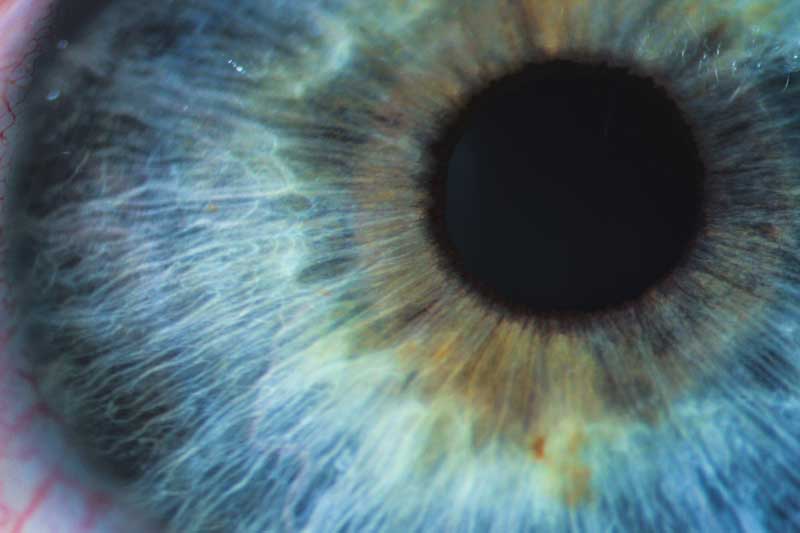Resource • Article
You’re Holding Your Eye Drops Wrong – What Makes Ophthalmology Trials so Challenging?

Last week, one of our resident experts in ophthalmology, Ignacio Handal, gave a training for some of our current studies with a focus on which pitfalls to avoid specifically in ophthalmology trials. He dished out many fun facts and eye-opening insights.
Compliance is difficult enough to achieve for any medication, and remembering to take eye drops on top of oral medications is an easily forgettable extra step. Only half of glaucoma patients are compliant with treatment regimens, and that proportion falls further as the number of other prescribed medications increases. Eye drops are also uncomfortable (who wants to hold their eye open while they pour in a foreign liquid?). They can also be annoying and troublesome to administer, if the method is to try to hold the bottle steady while dangling it over your eye, especially if tremors are involved. But something many people don’t know is that the bottles are designed to rest on the bridge of your nose! This way, hand-eye coordination is less of an issue, and you sure don’t want to miss. Some of these eye drop medications are upwards of $600 per tiny bottle.
Because vision is the relevant outcome in many ophthalmology studies, study assessments largely rely on patient-reported, and quite subjective, data. An example is the Humphrey test to measure visual field. In this exam, patients focus or fixate their gaze on a central light and then report whether they can see lights flashing in their peripheral field of view. The basic version takes about 10-15 minutes per eye, with longer versions taking up to 30 minutes per eye. Needless to say, this is exhausting for patients. In Handal’s experience, some patients will give great effort, and some will not. The biggest problem lies in inconsistency of effort: if patients give 100% effort the first time, and then taper off over time, it will look like they are losing vision over time, which is very problematic for studies measuring vision loss. Fortunately, there is a way to monitor how “compliant” patients are with the exam: their fixation can be measured with a small camera that captures eye movement. This at least allows physicians to determine whether the data is reliable or not. For this, though, Handal recommends telling the patient to give consistent effort, even if it is not 100% every time, so that significant reductions in overall vision can be tracked.
There can also be troubles with assessments that are done by the physician, according to Handal. “You have to have good vision just to be an ophthalmologist.” Doctors don’t have an amazing view of the back of the eye; it’s a pretty blurry picture. This can complicate assessments and reduce the reliability of trial data.
The order of assessments matters too. Assessing hyperemia in the eyes (eye redness) after a patient has had their eye poked 8 times to measure cornea thickness via pachymetry is not a good idea. Simple solution: always do non-contact exams first!
Screening and baseline measurements are also of paramount importance and should be done cautiously. If screening is lax and patients with worse vision are accidentally included in a trial when they shouldn’t be, then events found during the study that are actually historical findings are wrongly reported as adverse events, and the patient can also personally be at a higher risk of harm from the experimental treatment. If patients are screened more conservatively, there will likely be fewer adverse events during the study.
The benefits of working so diligently to run successful ophthalmology trials are apparent in some recent advances. In the training, Handal told us about a newly approved gene therapy for hereditary retinal dystrophy. Handal feels especially sad for these patients, since the disease manifests in early adolescence and can result in complete blindness by mid-twenties. These children once knew the beauty of the world, and it is taken from them early in life. Not surprisingly, patients with retinal diseases have one of the highest incidences of comorbid depression. But advances like these are changing the game for these patients who were previously orphaned by pharmaceutical companies because of the rarity of the disease.
Interestingly, this was actually the first FDA-approved gene therapy targeting a disease resulting from a genetic mutation. When we think of gene therapy, this is what most people probably imagine: an engineered, normal copy of a gene traveling to the location where a defective gene is expressed and replacing it, restoring normal function. This is exactly what is happening with Luxturna, but it’s not the way most gene therapies work in practice.
Handal and other experts in the field are working hard to run successful trials in ophthalmology. The advances made thus far are truly amazing, considering that people who once could not see are seeing the world again, and there are many more innovations in the works.
You’re Holding Your Eye Drops Wrong – What Makes Ophthalmology Trials so Challenging? by ignacio handal [Link] from BiorasiLLC

Ignacio Handal
Meet our Subject Matter Expert:
Ignacio Handal studied microbiology and biomedical sciences at Auburn University in Alabama. Prior to joining the team at Biorasi, Handal was the Director of Clinical Research at Eye Center South, which is the 5th largest ophthalmology practice in the country. He started the research division there himself and was managing around 10 pharmaceutical studies at any given point. Now the Director of Program Management at Biorasi, Handal bridges our Program Development and Project Management teams so that sponsors experience continuity of care from project conception to close.